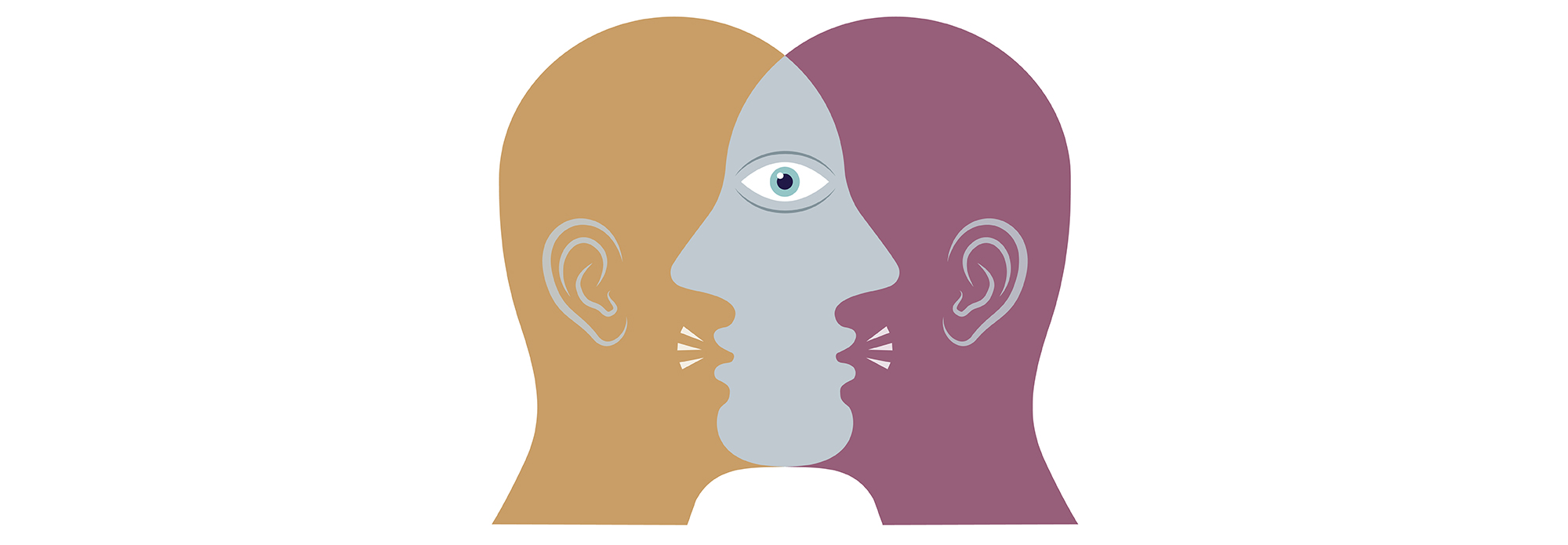Whenever someone asks me, “So, are you an introvert or an extrovert?” I always pause longer than expected. It’s not that I don’t know myself. It’s that neither label really fits. At an offsite, I can be the one staying up late with the team. Yet, the next weekend, I’ll crave nothing more than a quiet corner and a book. So, my answer usually lands somewhere in the middle: “It depends.”
Like tea vs. coffee or cats vs. dogs, the introvert vs. extrovert divide continues to fascinate us and spark debate. Traditionally, extroversion has been linked to workplace success, especially in sales and leadership roles. In recent years, we have also seen introversion gaining a new celebrity status – especially since Susan Cain’s book, Quiet, became a global phenomenon. Many people hold strong views on which of these two personality types is better, happier, more effective and so on.
In the middle of the introvert vs. extrovert debate, it’s easy to miss a third option hiding in plain sight: the ambivert.
I dove into this intriguing topic recently, thanks to Karl Moore’s We Are All Ambiverts Now, published earlier this month. Reading the book was like having a series of lightbulb moments! I spotted ambivert traits in myself as well as people around me – and understood how valuable they can be.
So, this week, let’s explore the power of being an ambivert. What advantages does it offer? And how can you embrace your ambivert side to become more impactful at work?
Ambiverts occupy the middle ground between extroverts and introverts. Instead of being locked into one style, they move deftly across the spectrum, adapting to the context. They speak up when needed but also listen deeply. They are comfortable taking the spotlight – or handing it off. They can be confident and inspiring in one setting, and empathetic and reflective in another.
Like chameleons, ambiverts have the ability to switch between modes, giving them a distinct edge at the workplace.
The ambivert advantage
Conventional wisdom says extroverts rise faster at work. They take charge and command attention. But research paints a more nuanced picture. In reality, being overly extroverted can backfire – especially in roles requiring listening, patience or empathy. The same goes for extreme introversion when connection and collaboration are essential.
In a 2013 study, psychologist Adam Grant found that the best-performing salespeople were those who blended the best of introvert and extrovert traits: they were assertive and enthusiastic but also heard out customers’ needs and didn’t become overconfident. Based on his findings, Grant coined the phrase ‘ambivert advantage’.
Here’s why ambiverts thrive and often outperform their peers:
- They communicate with balance. They know when to speak and when to pause.
- They’re persuasive but not pushy. Their mix of assertiveness and empathy creates trust.
- They adapt to team dynamics. They don’t overpower quiet colleagues or disappear around louder ones.
- They don’t over-identify with one style. They act based on need, not habit.
- They bring range to their role. They take the lead when required – and step back with equal ease.
Moore estimates that about 20% of top business leaders are natural ambiverts. But he believes that the pandemic effect has forced even extrovert and introvert leaders to adopt more ambivert behaviours – a self-fulfilling prophecy, since those who act like ambiverts eventually become ambiverts. As he says:
We are all ambiverts now, or at least we should be!
Can you really become an ambivert?
If you’ve always seen yourself as an extrovert or introvert, becoming an ambivert may seem tricky – but it’s easier than you think. It’s not about abruptly changing your whole personality but about adapting your behaviours in certain settings. For example, extroverts might practice active listening in meetings, while introverts could try initiating small talk with co-workers.
It’s not only salespeople and leaders who benefit from ambiversion. Almost anyone, regardless of function or seniority, can harness the ambivert advantage. The earlier you begin in your career, the better – the dividends accrue over time.
Wait…am I already an ambivert?
If you often feel like you’re “in the middle”, you may be an ambivert. Here are five signals to look for:
1. You enjoy people – until you don’t.
You love a buzzing social event, but you also need solitary breaks to recharge.
2. You’re a situational speaker.
You speak when something needs saying, not just to fill silence.
3. You’re a natural chameleon.
You read the room and modulate your energy accordingly – from chitchat to deep talk.
4. You connect across personality types.
You find it easy to build rapport with both the outgoing and the quiet.
5. You struggle to choose a label.
When asked if you’re an introvert or extrovert, your honest answer is: “It depends”.
If this resonates, you’re not alone. According to psychologist Michael Page, most of us fall somewhere on the ambivert spectrum – we just haven’t always had the language for it. Natural ambiverts have a sharp understanding of context, which shows up as social flexibility – a highly useful skill in both personal and professional life.
Build your ambivert muscle
No matter where you start out on the spectrum, you can grow towards the middle. Here are six suggestions to help you develop your inner ambivert:
1. Stretch your edge.
If you lean introverted, challenge yourself to speak first in meetings or strike up conversations. If you lean extroverted, aim to listen without jumping in or share quiet moments.
2. Grow in micro-doses.
Keep practicing small behaviours that go counter to your instinctive style. Take “gentle risks”. Aim for 3-5 times a day. The more frequently you get out of your comfort zone, the easier it becomes.
3. Try mental framing.
Before joining a meeting or conversation, ask yourself: “What does this moment call for – energy or presence?” Then adapt.
4. Try situational switching.
Expand your range by switching between different styles in social settings. Engage in small talk. Tell an interesting story. Ask good questions and listen closely. Have a meaningful conversation.
5. Experiment with feedback.
Ask trusted peers how your communication lands. Does it overwhelm – or sink without a trace? Adjust accordingly.
6. Schedule for balance.
Don’t stack your day with only one type of task. Mix solo deep work with collaborative huddles. Take short breaks to refresh.
Watch out for burnout
Extroverts recharge in the company of other people, while introverts do so in solitude. If you strongly identify with either of these categories, then channelling your ambivert side can take a toll. Going against your instinctive behaviours uses up more mental energy. If you’re not careful, you could end up exhausted.
This is why it’s essential to continue energising yourself in the way that suits you – even as you develop into an ambivert. For extroverts, that might look like having a lively lunch with colleagues, while introverts could take a solo walk or a reading break.
Interestingly, even inborn ambiverts are prone to burnout! This is because they draw energy from both the external and internal world – if the balance is skewed, it can make them irritable, stressed and demotivated. If you identify as an ambivert, plan your time in a way that fulfils your need for socialising as well as a quiet retreat.
The future is flexible
In pop psychology, we often reduce people to types: introvert or extrovert, thinker or feeler, quiet or loud. But the most successful people – and the best colleagues, teammates and leaders – often resist easy categorisation. They toggle between modes. They know when to speak and when to listen. They shift and adapt.
More than a personality trait, ambiversion is a strategic capability. In a world that demands range and agility, it’s less about choosing a side – and more about learning how to navigate both.








Comments